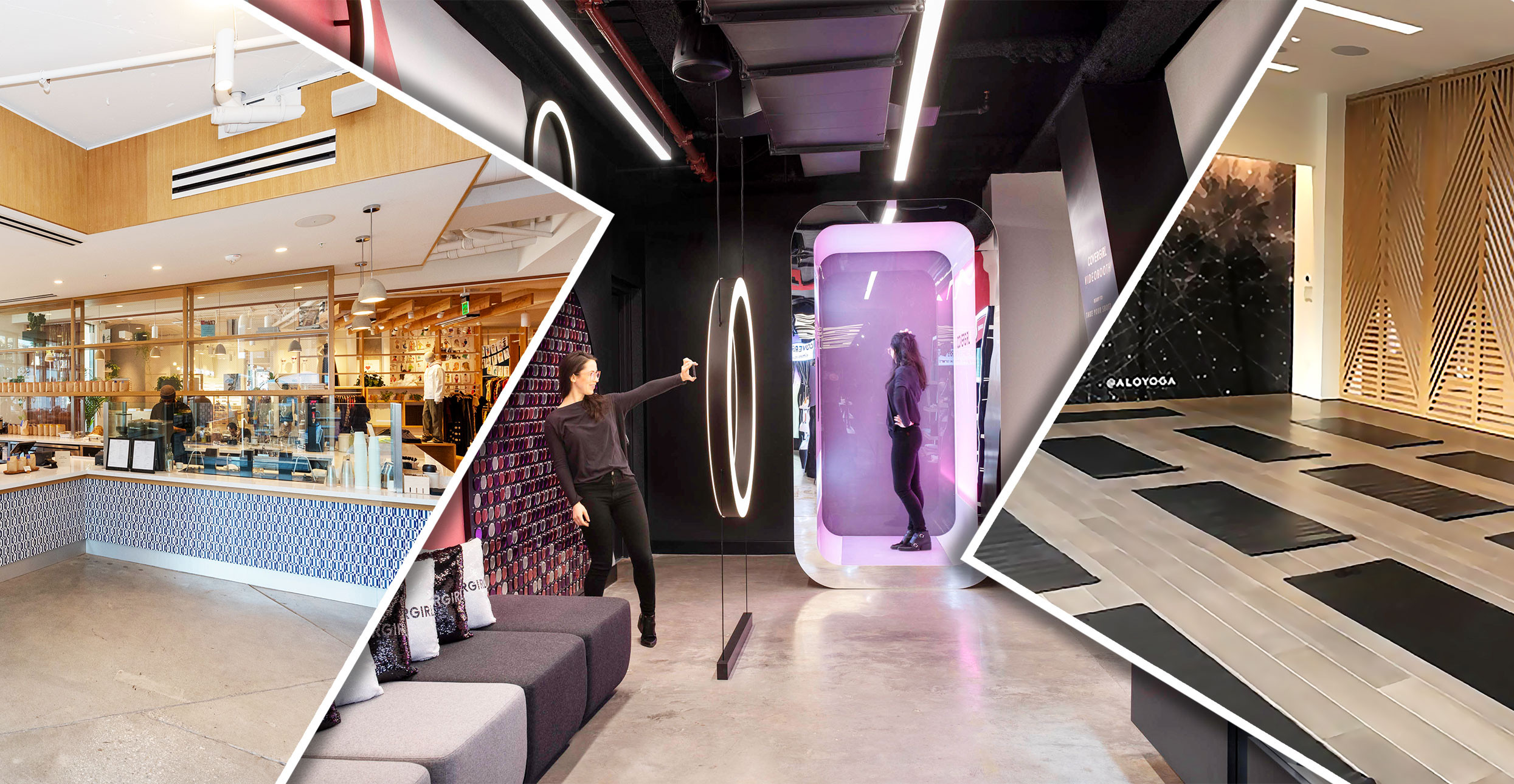As technology advances, the lines between online and in-store become more blended, which makes it even more important for clients to create a cohesive customer experience—on and offline. The key to a true omni-channel approach is in-depth integration of social media, website, and mobile marketing campaigns with in-store experiences. All these channels work together to drive foot traffic and increase sales—whether in-store or online.
Driving Foot Traffic
To draw shoppers in, retailers have turned to multi-sensory installations; consumers need a reason to opt to go in-store rather than shop online. For example, DICK’s Sporting Goods has set up equipment trial areas so customers can test out gear in their intended use—in the water, on a racetrack, etc. Experiences that translate from store to online are becoming essential, creating a cohesive experience that benefits both the customer and the brand. Instagram-able moments in a retail space provide the shopper with content, while driving awareness for the retailer. Augmented reality—including virtual fitting rooms, interactive scans, and store navigation—provides an efficient shopping experience for customers, while capturing data for stores.
Increasing Sales
An omni-channel approach isn’t effective if it doesn’t drive sales. The technology that brands have access to can take one interaction and elevate it to a new level. For example, the Nordstrom app allows shoppers to place items they like in a fitting room so when they arrive at the store, they can quickly and easily decide on purchase. Beacons and Bluetooth connections alert shoppers of specific promotions and messages when they’re in or near a store. Wearables—while still in the early stages—notify consumers of long lines, special promotions, and payment updates.
If leveraged correctly, both brick-and-mortar and digital properties can create a continuous cycle of brand interaction and purchase, driving loyalty and sales through cohesive experiences.
By: Jim Scarpone, Director of Business Development
